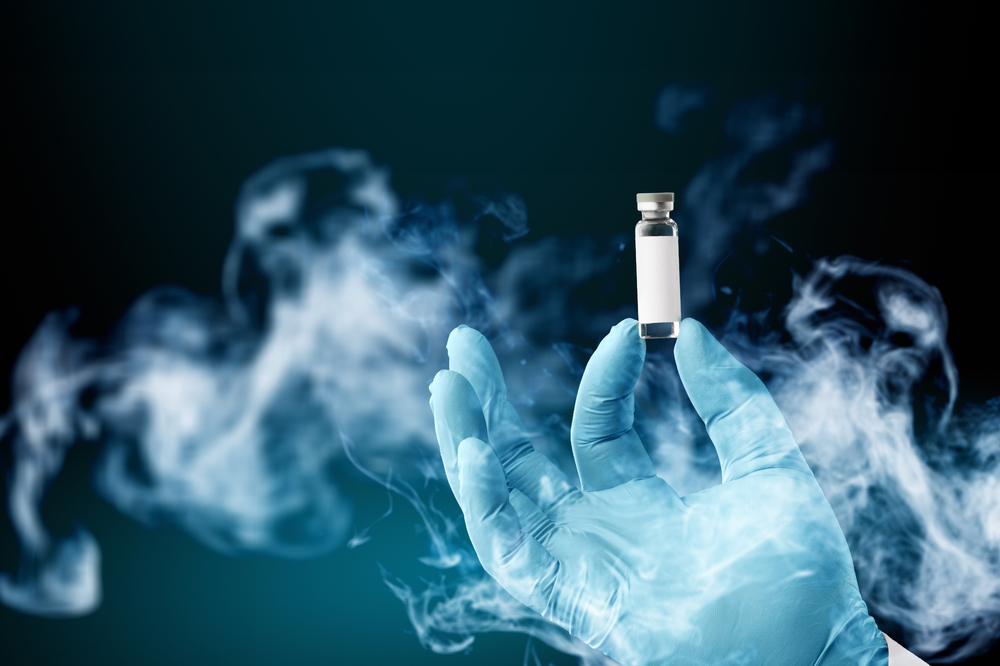
In laboratory settings, effective cold storage is far more than a matter of convenience—it’s an essential component in maintaining the integrity and safety of valuable materials. From delicate biological samples to sensitive chemical reagents, proper laboratory cold storage ensures that critical resources are preserved and protected, allowing researchers to work with accuracy and confidence.
But designing laboratory cold storage is a nuanced task that goes beyond selecting standard refrigerators and freezers. It involves carefully planning for temperature stability, durability, energy efficiency, and compliance with stringent regulations.
In this article, we’ll explore the key considerations for creating cold storage solutions tailored to meet the specialized needs of laboratories. Whether it’s selecting the right storage type, ensuring continuous monitoring, or optimizing energy efficiency, each factor plays a vital role in supporting the reliability of a laboratory’s work.
With decades of experience in laboratory design, Genie Scientific offers the expertise to guide you in achieving a customized, high-performance cold storage setup that meets your laboratory’s unique requirements.
Types of Cold Storage Solutions for Laboratories
Choosing the right type of cold storage is critical for maintaining the integrity of sensitive materials in laboratory environments. Laboratories vary widely in their storage requirements based on the types of samples, reagents, or biological materials they handle. From basic refrigeration to ultra-low temperatures, here are the main types of cold storage solutions available:
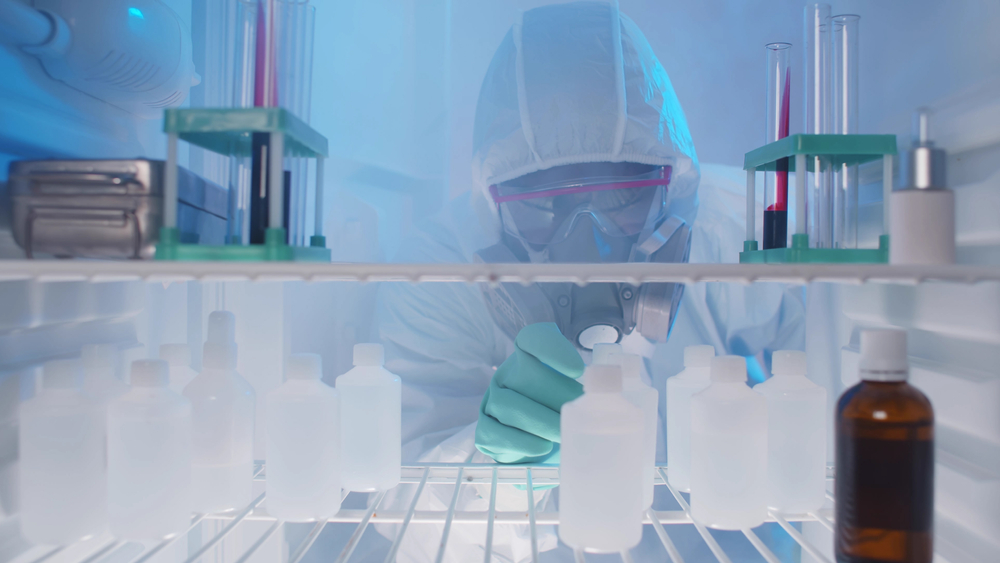
1. Laboratory Refrigerators and Freezers
– Standard laboratory refrigerators typically maintain temperatures between 2 °C and 8 °C, making them suitable for everyday items like reagents, cell cultures, and media that require consistent cooling but not extreme cold.
– Laboratory freezers, on the other hand, generally operate around -20 °C, ideal for materials that need longer-term storage at lower temperatures, such as certain enzymes, chemicals, and samples.
– For particularly sensitive biological samples, ultra-low temperature (ULT) freezers provide storage conditions as low as -80 °C. ULT freezers are essential for preserving samples like DNA, RNA, proteins, and some pharmaceuticals that require extremely stable, cold environments to maintain their viability over extended periods.
2. Cryogenic Storage
– Cryogenic freezers, designed to reach temperatures as low as -150 °C, use liquid nitrogen to maintain ultra-low temperatures necessary for long-term preservation of the most temperature-sensitive biological materials. Cryogenic storage is critical for labs working with cell lines, tissues, and other samples that need to remain viable indefinitely.
– Due to their reliance on liquid nitrogen, cryogenic units require careful handling and additional safety precautions. These freezers are typically reserved for specialized facilities and applications, such as tissue banks and genetic research.
3. Walk-In Cold Rooms
– For laboratories with large-scale cold storage needs, walk-in cold rooms provide expansive, configurable storage space. Walk-in cold rooms are essentially large refrigeration units that can be customized to maintain temperatures within a specific range, from mild refrigeration to deep-freezing.
– Walk-in cold rooms allow laboratories to organize their materials in one centralized, accessible space. This storage solution is particularly useful for storing high volumes of temperature-sensitive materials that would be cumbersome to manage in smaller, standalone units.
4. Modular Cold Storage Units
– Modular units offer flexibility for labs with evolving storage needs, allowing for the addition, removal, or rearrangement of storage components as needed. These units often come in prefabricated sections that can be easily assembled or reconfigured, making them adaptable to changes in laboratory space or storage demands.
– Genie Scientific’s expertise in modular design means these units can be customized to fit specific lab spaces, offering an efficient, scalable solution that provides both versatility and functionality.
Selecting the right type of cold storage for a laboratory involves understanding both the specific requirements of stored materials and the facility’s operational demands.
By partnering with an experienced laboratory designer like Genie Scientific, laboratories can achieve cold storage solutions that are precisely suited to their needs, ensuring a reliable, compliant, and efficient storage environment.
Temperature Requirements and Stability
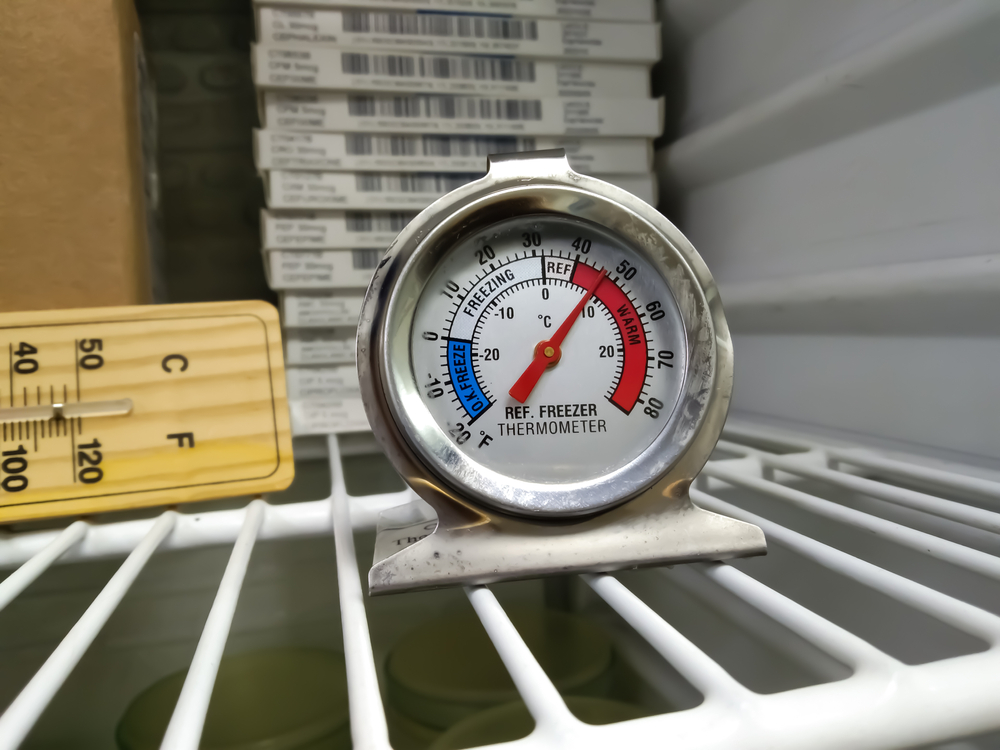
Temperature consistency is one of the most crucial factors in laboratory cold storage, as even minor fluctuations can jeopardize the viability of sensitive samples and reagents. Different types of materials require specific storage temperatures to preserve their chemical stability, prevent degradation, and ensure they remain safe and effective for research.
Understanding the required temperature ranges and implementing measures to maintain stability within those ranges are essential steps in designing reliable cold storage.
1. Standard Refrigeration (2 °C to 8 °C)
– For many reagents, culture media, and pharmaceuticals, a temperature range of 2 °C to 8 °C is sufficient. Standard laboratory refrigerators are designed to maintain this range with minimal fluctuations, preserving the integrity of materials that require only mild cooling.
– Maintaining stability in this range can be challenging in busy labs, where frequent door openings can affect internal temperatures. Selecting refrigerators with rapid cooling capabilities or air curtains can help mitigate these effects, ensuring samples remain protected.
2. Freezing (-20 °C)
– Materials like certain chemicals, enzymes, and biological samples often require storage at -20 °C to maintain their properties over time. Laboratory freezers are designed to sustain this temperature, allowing labs to store these materials for weeks or months without degradation.
– Stability at this level requires high-quality insulation and efficient temperature recovery mechanisms, especially in high-usage environments. Alarms and monitoring systems can provide an extra layer of protection by alerting staff to any temperature deviations that could affect stored materials.
3. Ultra-Low Temperature (-80 °C)
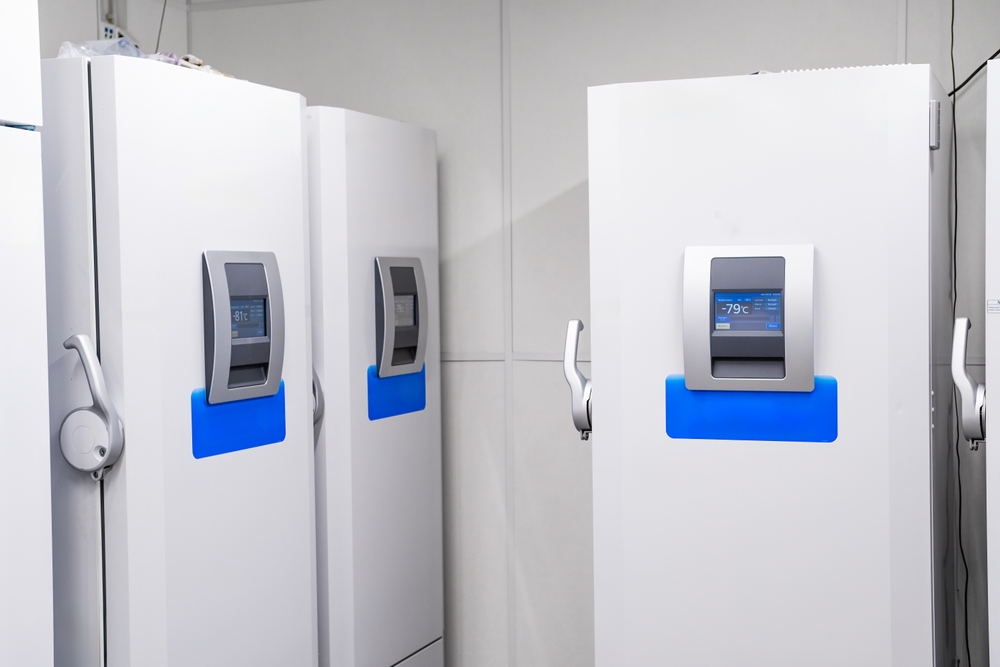
– Ultra-low temperature (ULT) storage is essential for particularly sensitive biological materials, such as DNA, RNA, and proteins. ULT freezers, which can reach as low as -80 °C, prevent biochemical activity and preserve sample integrity for long-term storage.
– ULT freezers require robust design features to maintain stability, including advanced insulation and powerful compressors. Given the energy-intensive nature of these units, regular maintenance and calibration are crucial for ensuring optimal performance. Genie Scientific’s experience in creating temperature-stable environments can help labs maximize the efficiency and reliability of ULT storage.
- Cryogenic Storage (-150 °C and Below)
– For materials that require indefinite preservation without the risk of degradation, cryogenic storage provides the most stable environment. By reaching temperatures as low as -150 °C, cryogenic freezers essentially halt all biological and chemical processes, making them ideal for preserving tissues, cell lines, and other highly sensitive samples.
– Cryogenic units rely on liquid nitrogen or liquid helium and demand specialized storage areas and safety protocols. Stability at these temperatures requires careful planning to prevent temperature spikes during sample retrieval and regular maintenance to ensure uninterrupted performance.
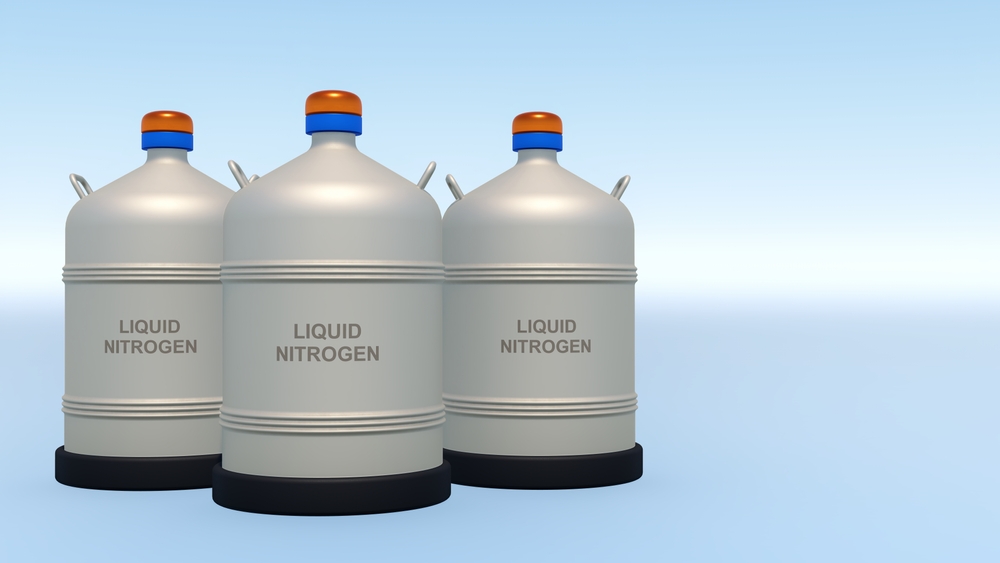
5. Ensuring Temperature Stability Across All Storage Types
– Monitoring Systems: Continuous temperature monitoring is essential for identifying fluctuations before they compromise stored materials. Digital monitoring systems can log temperature data, issue alerts, and allow remote tracking to ensure real-time oversight.
– Redundancy and Backup Power: Backup power sources and redundancy in storage equipment provide protection during power outages or mechanical failures, reducing the risk of temperature loss.
– Proper Insulation and Sealing: High-quality insulation and secure seals in storage units reduce temperature drift, minimizing the impact of external factors.
With a comprehensive understanding of temperature requirements and the tools to maintain stability, labs can protect their materials and maintain high standards for accuracy and safety.
Genie Scientific offers tailored solutions that prioritize both temperature precision and stability, supporting the preservation needs of modern laboratories.
Material and Structural Considerations
The materials and structural design of cold storage units play a key role in ensuring durability, temperature stability, and energy efficiency.
Laboratories require storage units that can withstand demanding conditions, minimize contamination risks, and support easy access to stored materials. When selecting cold storage solutions, considering factors like insulation quality, corrosion resistance, and space efficiency can make a significant difference in performance and longevity.
1. High-Quality Insulation for Temperature Control
– Effective insulation is essential to maintain stable temperatures within storage units. Insulation materials, such as polyurethane foam, help minimize temperature fluctuations by reducing thermal conductivity, keeping internal temperatures consistent regardless of external conditions.
– Insulated doors, wall panels, and seals further enhance temperature stability and reduce the workload on cooling systems, contributing to both energy efficiency and operational reliability.
2. Durable, Corrosion-Resistant Materials
Laboratory cold storage units must be built to endure regular use and withstand exposure to varying humidity levels, chemicals, and temperature changes. Materials like powder-coated steel, stainless steel, and galvanized metals provide the strength needed for long-term durability while resisting corrosion and rust.
– Powder coating, a Genie Scientific specialty, offers an additional layer of protection that enhances resistance to scratches, chemicals, and moisture. This durability ensures that the units can maintain structural integrity and aesthetic appeal even in high-traffic laboratory environments.
Additional Reading: Powder Coating Metal – Genie Scientific
3. Space Optimization and Accessibility
– Efficient storage layout and organization are critical in laboratory cold storage, where space is often limited. Adjustable shelving, stackable racks, and modular compartments help labs make the most of available space while keeping materials organized and accessible.
– Customizable modular designs allow for the reconfiguration of storage units based on changing needs, offering flexibility to laboratories as their storage demands evolve. Genie Scientific’s expertise in modular construction enables laboratories to optimize their layouts, maximizing capacity without compromising accessibility.
4. Ergonomic Design and User Safety
– Laboratories require cold storage units that are both easy to use and safe for personnel. Ergonomic handles, easy-glide shelves, and clear labeling improve user experience and reduce the risk of accidents during sample retrieval.
– Features such as automatic door closers and anti-condensation mechanisms help maintain a safe and efficient work environment, especially in settings where multiple users may access storage units frequently.
5. Compliance with Health and Safety Standards
– Cold storage units must meet industry-specific standards for safety, cleanliness, and structural quality. Materials used in storage construction should comply with regulatory requirements to prevent contamination risks and ensure a safe environment for sensitive materials.
– Genie Scientific’s cold storage solutions are designed with regulatory compliance in mind, providing labs with storage systems that align with both industry standards and operational needs.
Choosing the right materials and structure for cold storage ensures not only the longevity of the unit but also the safety and effectiveness of the stored materials. By focusing on durability, accessibility, and compliance, laboratories can maintain an efficient, reliable cold storage environment that supports their critical research and preservation needs.
Monitoring and Control Systems
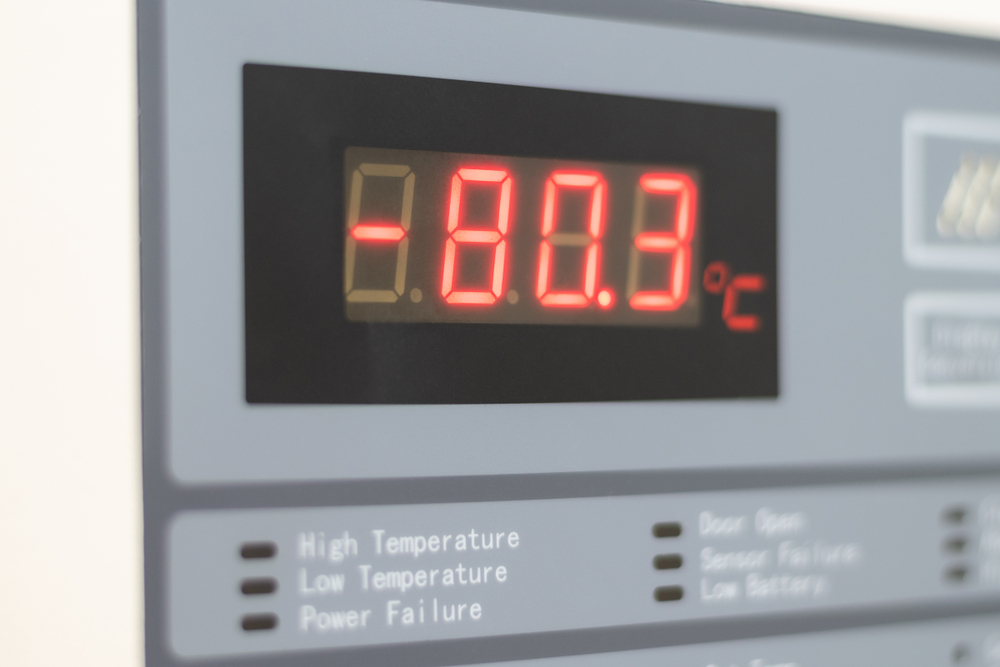
Effective monitoring and control systems are crucial for maintaining the stability of cold storage environments in laboratories. Given the sensitivity of materials such as biological samples, reagents, and pharmaceuticals, continuous monitoring allows laboratories to ensure that storage conditions remain within precise temperature ranges.
Advanced control systems add an extra layer of security, minimizing the risk of unexpected fluctuations and enabling prompt responses to potential issues.
1. Real-Time Temperature Monitoring
– Real-time temperature monitoring systems allow laboratories to track storage conditions continuously, providing immediate feedback on any variations in temperature. These systems often include digital displays, sensors, and data logging capabilities that enable laboratory personnel to monitor conditions both on-site and remotely.
– Temperature logging is particularly valuable for compliance and record-keeping, as it generates a continuous record of storage conditions over time. This documentation can support regulatory requirements and provide insight into any incidents affecting stored materials.
2. Automated Alarms and Alerts
– Automated alarm systems are essential for ensuring that any deviations in temperature, humidity, or other critical parameters are detected and addressed promptly. These alarms can be set to trigger visual or audible alerts on-site, as well as send notifications via email or SMS to designated personnel.
– By notifying staff in real time, automated alarms help laboratories respond quickly to equipment malfunctions, power outages, or other issues, reducing the risk of material loss. Genie Scientific’s systems can be customized to provide alerts based on specific thresholds tailored to the needs of each lab.
3. Access Control and Security
– Security measures like access control systems protect against unauthorized entry, helping to maintain the integrity of sensitive materials. Laboratories often rely on digital keypads, swipe cards, or biometric systems to restrict access to critical cold storage units, allowing only authorized personnel to enter.
– Controlled access enhances security and contributes to temperature stability by limiting the frequency of door openings, which can affect internal temperatures. Integrating access control with monitoring systems enables labs to track access logs, adding another layer of oversight.
4. Redundant Power and Backup Systems
– Power interruptions can have a severe impact on laboratory cold storage, potentially compromising valuable materials within minutes. To address this risk, many labs install backup power systems, such as uninterruptible power supplies (UPS) or backup generators, which activate automatically in case of a power outage.
– For facilities with ultra-low temperature or cryogenic storage, redundant cooling units and compressors add further protection, allowing continued operation in the event of equipment failure. Genie Scientific provides tailored solutions to ensure that critical storage systems remain functional under any circumstance.
5. Data Connectivity and Remote Access
– Many modern monitoring systems feature data connectivity that enables remote access, allowing laboratory staff to check and adjust settings from mobile devices or computers. Remote access is especially beneficial for laboratories with around-the-clock monitoring needs, as it enables personnel to manage storage conditions from any location.
– Integrated systems that connect temperature, access, and alarm data provide labs with comprehensive control and insight, enhancing their ability to safeguard stored materials. Genie Scientific’s expertise in configuring interconnected systems ensures that monitoring data is accessible, accurate, and secure.
Incorporating advanced monitoring and control systems into laboratory cold storage is a proactive approach that can prevent costly errors and maintain the reliability of stored materials. With the right systems in place, laboratories can achieve optimal storage conditions with the peace of mind that their sensitive resources are consistently protected.
Energy Efficiency and Sustainability
Energy efficiency and sustainability are becoming increasingly important in laboratory design, including cold storage solutions. Laboratories often consume high levels of energy, especially in maintaining refrigeration and freezing units, which can be costly and environmentally taxing.
By integrating energy-efficient technologies and sustainable practices into cold storage design, labs can reduce both their carbon footprint and operating costs, contributing to a greener, more sustainable future.
1. High-Efficiency Compressors and Cooling Systems
– Energy-efficient compressors are designed to optimize power usage while maintaining consistent temperatures in refrigeration and ultra-low temperature units. By selecting compressors with advanced energy-saving technologies, laboratories can reduce electricity consumption without compromising on temperature stability.
– Variable-speed compressors and other advanced cooling systems can adjust their output based on real-time needs, conserving energy during low-demand periods and enhancing efficiency in high-demand settings.
2. Advanced Insulation and Sealing
– Quality insulation is essential not only for maintaining stable temperatures, but also for conserving energy. Well-insulated storage units require less power to maintain target temperatures, as they are better able to retain cold air and reduce the workload on compressors.
– Door seals and gaskets play a crucial role in preventing cold air leaks, minimizing energy loss every time a unit is accessed. Genie Scientific’s storage solutions use high-grade materials that enhance both insulation and longevity, ensuring energy-efficient performance over time.
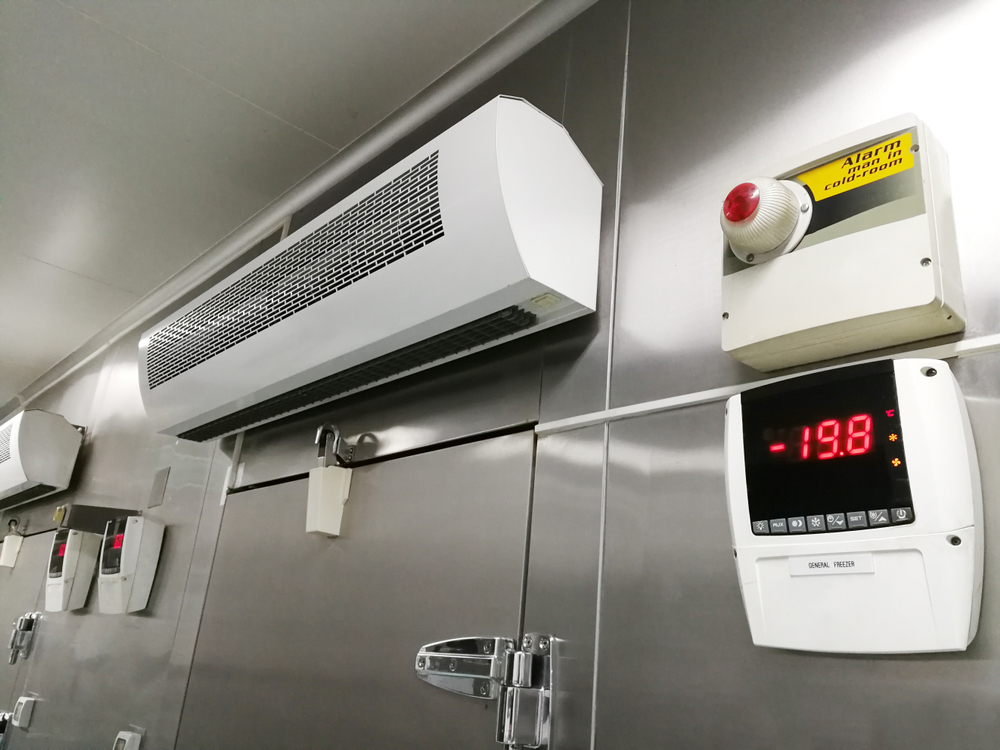
3. Smart Temperature Management Systems
– Digital controls and smart temperature management systems allow laboratories to monitor and adjust storage conditions with precision. By using sensors and algorithms to track temperature changes, these systems can make real-time adjustments that prevent energy waste.
– Integrating smart management systems also allows laboratories to set energy-saving modes for non-peak times, automatically reducing power usage when maximum cooling is not required.
4. Energy Recovery and Heat Exchange Systems
– Energy recovery systems capture waste heat generated by refrigeration units and repurpose it, potentially for heating water or other areas of the facility. This practice not only reduces the facility’s overall energy needs but also helps lower operating costs.
– Heat exchange systems, designed to efficiently transfer heat within cooling units, enhance the performance of compressors and minimize the loss of energy during temperature stabilization.
5. Sustainable Materials and Eco-Friendly Refrigerants
– The materials used in constructing cold storage units can have a significant environmental impact. Selecting sustainable, recyclable materials, such as steel and high-efficiency insulation, contributes to a lab’s overall sustainability efforts.
– Using eco-friendly refrigerants with low global warming potential (GWP) helps reduce greenhouse gas emissions associated with refrigeration. Many newer refrigerants offer the same cooling power as traditional options with a much lower environmental impact, aligning with regulatory standards for eco-friendly refrigeration.
6. Long-Term Cost Savings and Reduced Environmental Impact
– Investing in energy-efficient and sustainable cold storage solutions offers laboratories long-term cost savings by lowering electricity bills and reducing maintenance needs. While these systems may involve higher initial costs, their efficiency and durability make them a financially sound choice over time.
– By adopting sustainable practices, laboratories can minimize their carbon footprint, aligning with environmental goals and demonstrating a commitment to responsible resource management. Genie Scientific provides energy-efficient cold storage solutions that help laboratories balance their operational needs with environmental considerations.
Energy efficiency and sustainability in laboratory cold storage are not just ideal—they are achievable goals that bring both economic and ecological benefits. Through thoughtful design and innovative technology, labs can reduce energy consumption, lower costs, and support a healthier environment without compromising the quality of their work.

Compliance with Regulatory Standards
Ensuring compliance with regulatory standards is a fundamental aspect of designing and managing laboratory cold storage. Laboratories handling sensitive biological, chemical, or pharmaceutical materials are subject to various regulations designed to safeguard public health and safety, maintain research integrity, and minimize environmental impact.
Adhering to these standards not only protects stored materials but also helps laboratories avoid legal liabilities and uphold industry best practices.
1. Health and Safety Regulations
– Laboratories are typically required to comply with health and safety standards established by organizations such as the Occupational Safety and Health Administration (OSHA) in the U.S. These regulations cover essential safety measures, such as ensuring the proper handling and storage of hazardous materials, maintaining safe temperatures, and minimizing exposure risks for laboratory personnel.
– Cold storage units must meet specifications for safe operation, including features like secure sealing to prevent leaks, access control for restricted areas, and emergency alarms to notify personnel in case of temperature excursions. Genie Scientific designs its cold storage units with safety in mind, helping laboratories stay aligned with these standards.
2. Good Laboratory Practice (GLP) Guidelines
– Many laboratories follow Good Laboratory Practice (GLP) guidelines, a set of quality standards that govern the planning, performance, monitoring, and reporting of laboratory activities. GLP standards ensure consistency, reliability, and traceability, especially for laboratories in regulated industries such as pharmaceuticals, biotechnology, and healthcare.
– In terms of cold storage, GLP compliance involves maintaining accurate records of storage conditions, monitoring temperature and humidity levels, and implementing procedures to handle deviations. Genie Scientific’s advanced monitoring systems provide real-time data logging and reporting capabilities, facilitating GLP compliance.
3. ISO Standards for Cold Storage
– The International Organization for Standardization (ISO) offers specific standards for laboratory cold storage units. For example, ISO 13485 outlines requirements for medical device quality management, which may apply to laboratories storing diagnostic samples or medical devices under regulated conditions.
– ISO-compliant cold storage solutions emphasize quality, risk management, and environmental control. By selecting ISO-compliant storage systems, laboratories can ensure that their cold storage operations meet globally recognized standards for safety and quality.
4. Environmental Regulations
– Laboratories must also consider environmental regulations, particularly regarding refrigerants used in cold storage systems. Regulations such as the European Union’s F-gas regulations or the U.S. Environmental Protection Agency’s SNAP (Significant New Alternatives Policy) Program restrict the use of certain high-GWP refrigerants in favor of more eco-friendly alternatives.
– By choosing cold storage solutions that utilize low-GWP refrigerants and energy-efficient technology, laboratories can comply with these environmental standards while reducing their carbon footprint. Genie Scientific offers eco-friendly storage options that meet regulatory requirements and support sustainable operations.
5. Record-Keeping and Audits
– Comprehensive record-keeping is essential for regulatory compliance, as it provides evidence of consistent storage conditions and adherence to protocols. Many regulatory agencies require laboratories to maintain logs that document temperature history, access records, and any deviations from set conditions.
– Automated data logging and secure digital storage simplify the record-keeping process, enabling labs to easily access and present data during audits. Genie Scientific’s storage solutions offer integrated monitoring systems with data-logging capabilities that make compliance simpler and more reliable.
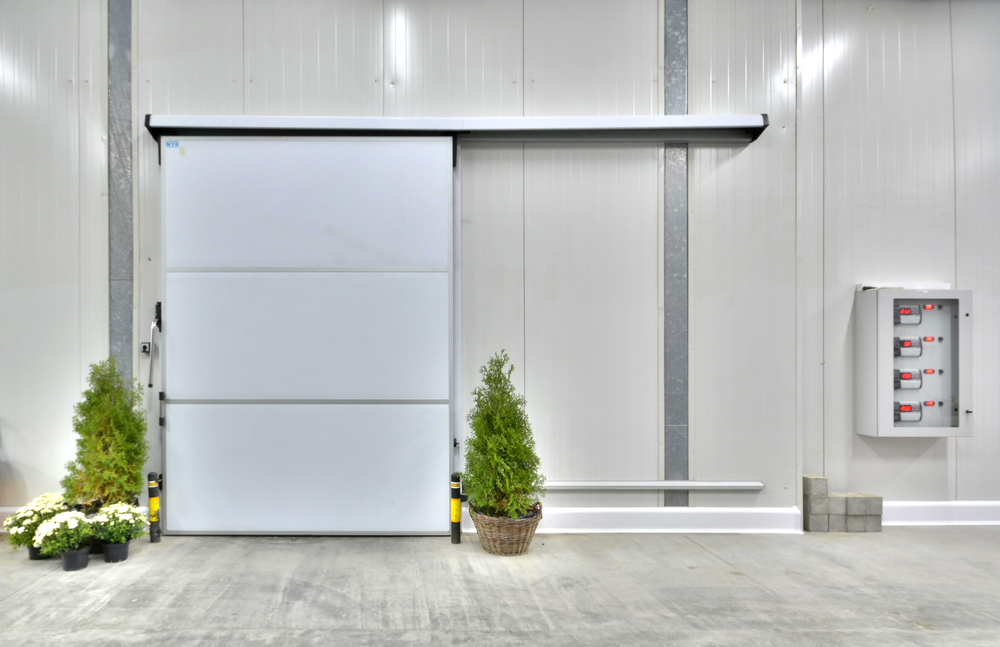
6. Industry-Specific Standards
– Laboratories in specialized fields, such as food and beverage, pharmaceuticals, or clinical diagnostics, may be subject to additional industry-specific standards for cold storage. For example, pharmaceutical labs must often comply with Good Manufacturing Practice (GMP) standards, which require precise control and documentation of storage conditions for drug ingredients and finished products.
– Genie Scientific’s tailored cold storage solutions are designed to meet these specialized requirements, offering laboratories the necessary customization and monitoring features to align with industry-specific regulations.
Meeting regulatory standards in cold storage is essential for maintaining the safety, quality, and reliability of laboratory operations. By designing cold storage systems that integrate compliance from the ground up, Genie Scientific helps laboratories achieve operational excellence while adhering to the strictest regulatory guidelines.
Conclusion: Partnering with the Right Laboratory Designer
Creating effective, compliant, and efficient cold storage solutions is essential to laboratory operations that depend on precise, reliable temperature control. From understanding specific storage requirements to selecting materials that enhance durability and energy efficiency, each aspect of cold storage design plays a role in supporting research integrity and safeguarding valuable materials.
Navigating these complexities requires more than just quality equipment; it calls for a knowledgeable partner who understands the unique demands of laboratory environments.
Partnering with an experienced laboratory designer, such as Genie Scientific, offers laboratories a comprehensive approach to cold storage solutions. Genie Scientific’s commitment to high-quality materials, advanced monitoring systems, and sustainable design aligns with the needs of modern laboratories.
By offering custom, modular designs that are built to meet regulatory standards and withstand the rigors of daily use, Genie Scientific provides laboratories with storage units that maximize performance, compliance, and longevity.
In choosing the right laboratory designer, labs gain access to tailored solutions that meet immediate storage needs and adapt to future challenges. With a focus on safety, precision, and sustainability, Genie Scientific empowers laboratories to achieve their goals while maintaining the highest standards of quality and reliability in cold storage.



